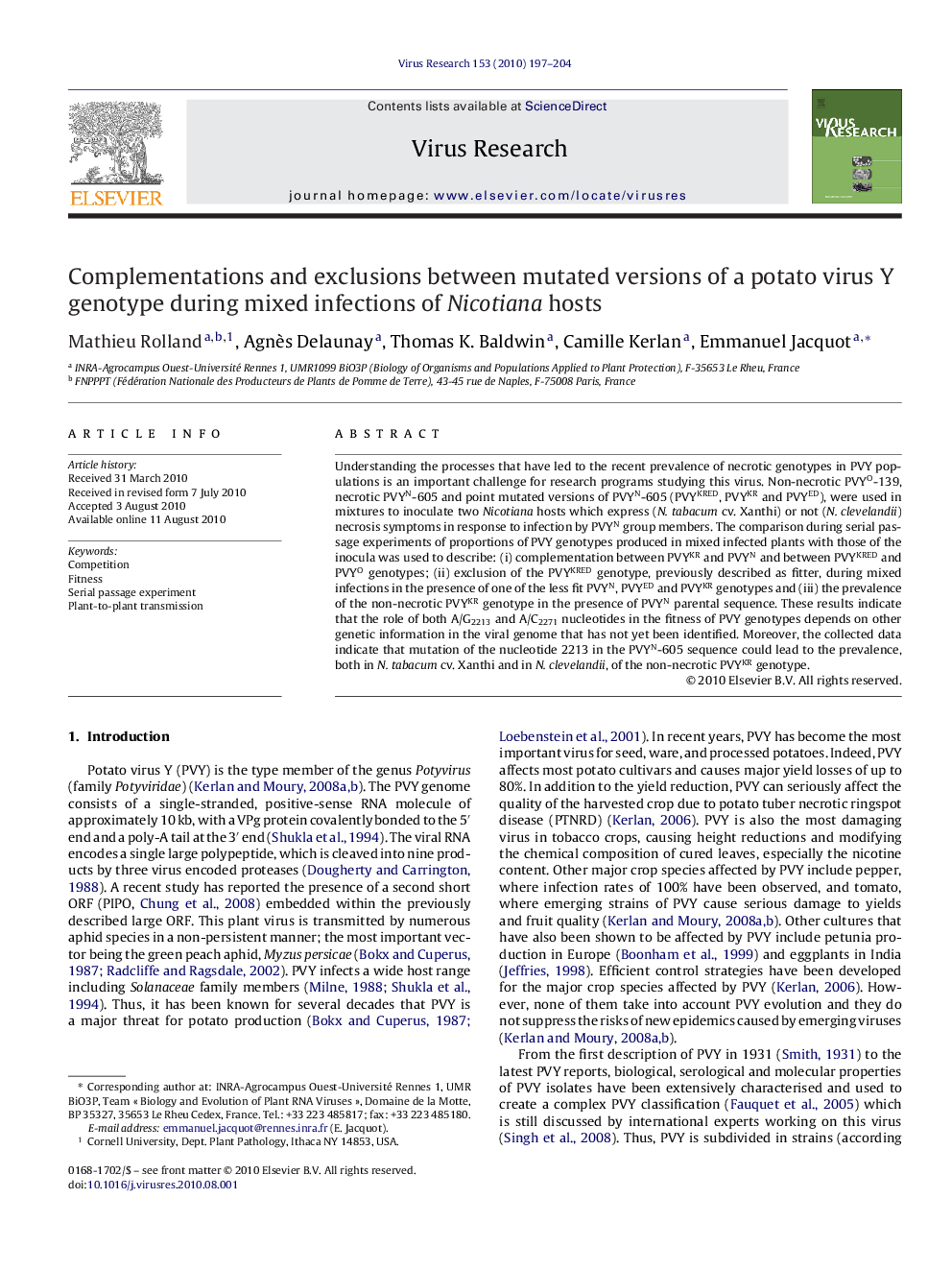| Article ID | Journal | Published Year | Pages | File Type |
|---|---|---|---|---|
| 3429246 | Virus Research | 2010 | 8 Pages |
Understanding the processes that have led to the recent prevalence of necrotic genotypes in PVY populations is an important challenge for research programs studying this virus. Non-necrotic PVYO-139, necrotic PVYN-605 and point mutated versions of PVYN-605 (PVYKRED, PVYKR and PVYED), were used in mixtures to inoculate two Nicotiana hosts which express (N. tabacum cv. Xanthi) or not (N. clevelandii) necrosis symptoms in response to infection by PVYN group members. The comparison during serial passage experiments of proportions of PVY genotypes produced in mixed infected plants with those of the inocula was used to describe: (i) complementation between PVYKR and PVYN and between PVYKRED and PVYO genotypes; (ii) exclusion of the PVYKRED genotype, previously described as fitter, during mixed infections in the presence of one of the less fit PVYN, PVYED and PVYKR genotypes and (iii) the prevalence of the non-necrotic PVYKR genotype in the presence of PVYN parental sequence. These results indicate that the role of both A/G2213 and A/C2271 nucleotides in the fitness of PVY genotypes depends on other genetic information in the viral genome that has not yet been identified. Moreover, the collected data indicate that mutation of the nucleotide 2213 in the PVYN-605 sequence could lead to the prevalence, both in N. tabacum cv. Xanthi and in N. clevelandii, of the non-necrotic PVYKR genotype.
